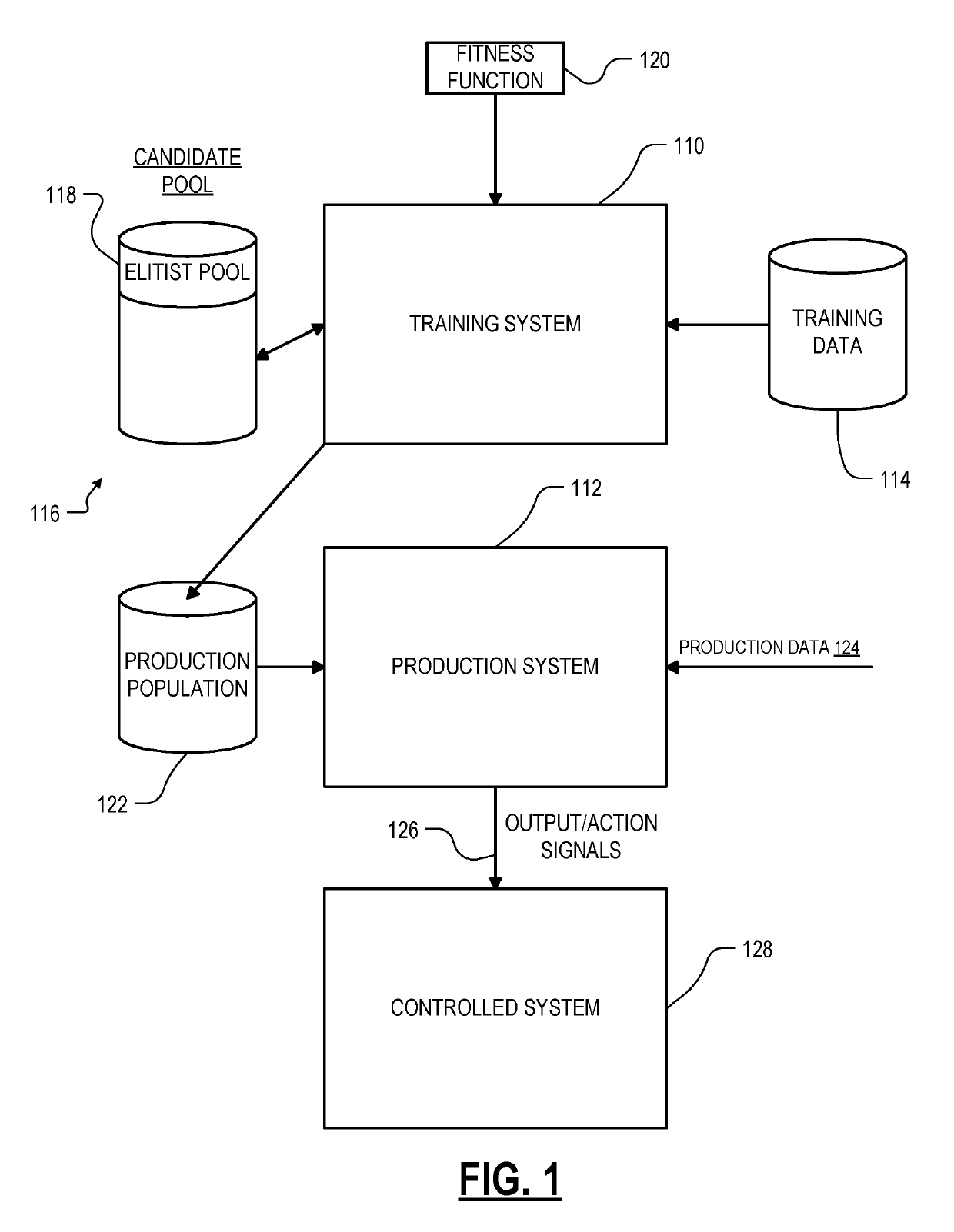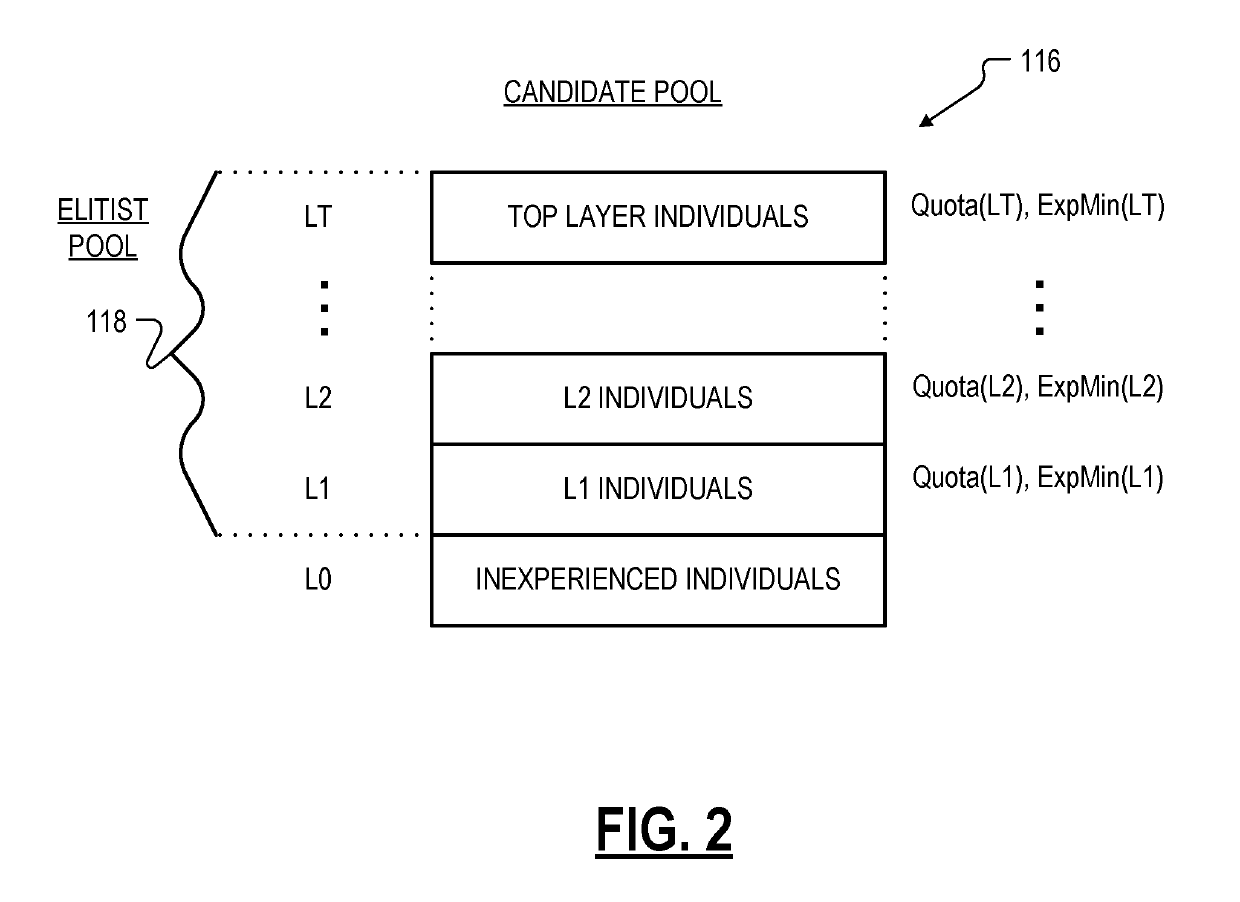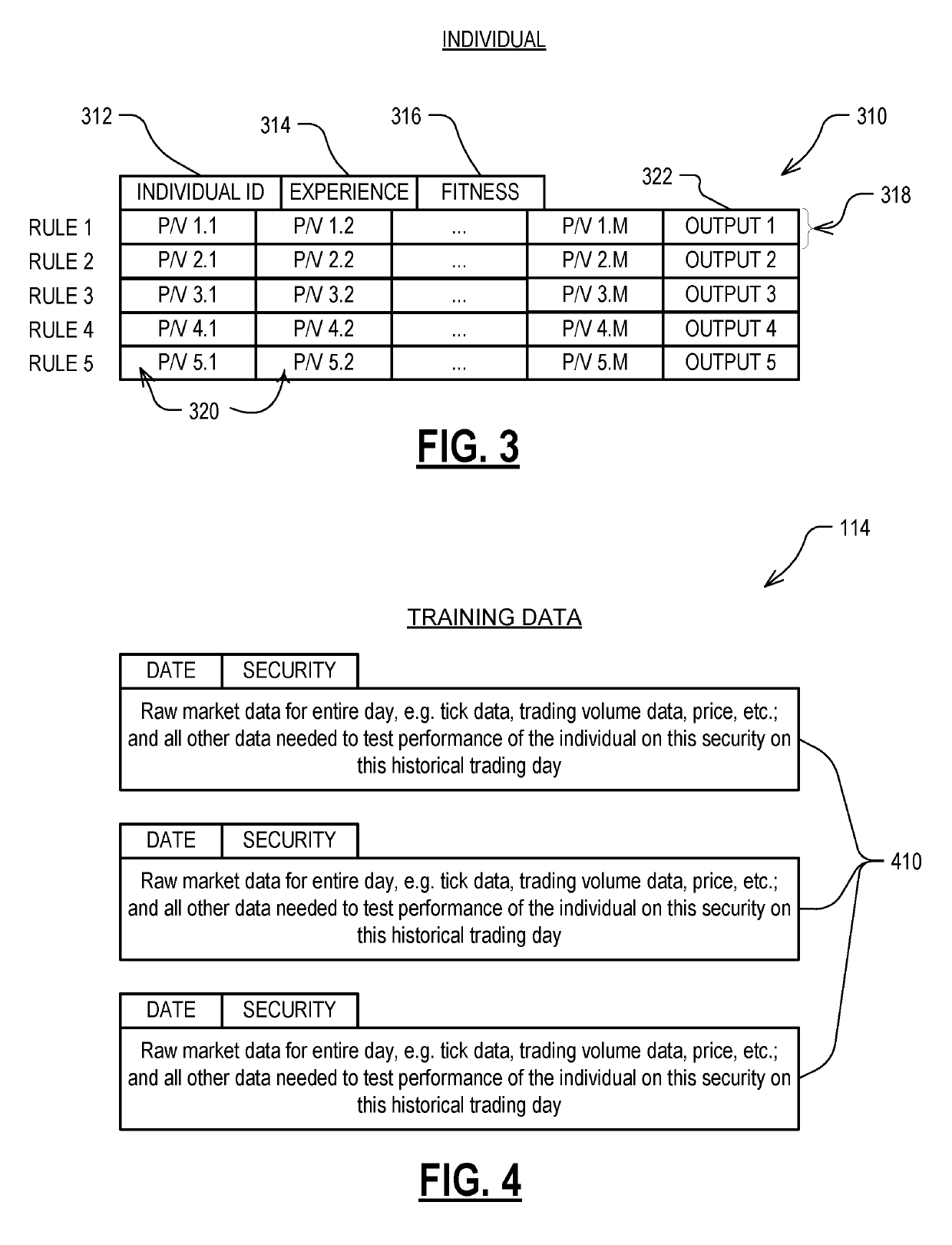Data mining technique with distributed novelty search
a data mining and novelty search technology, applied in the field of genetic algorithm improvement, can solve the problem of convergent gene expressions prematurely to local optima, and achieve the effect of reducing bandwidth requirements and reducing load on the top-chain evolutionary coordinator pool
- Summary
- Abstract
- Description
- Claims
- Application Information
AI Technical Summary
Benefits of technology
Problems solved by technology
Method used
Image
Examples
example sequence
[0125
[0126]Given the above principles, the following is an example sequence of steps that might occur in the arrangement of FIG. 11 as individuals are created, tested, subjected to competition, evolved, and eventually harvested. Many steps are omitted as the system operates on numerous individuals and numerous evolutionary not mentioned herein. Many steps are omitted also in between the steps set forth, for purposes of clarity. In addition, for purposes of clarity several of the evolutionary engines in FIG. 11 are referred to by shorthand abbreviations EC1, EC2, EC4, EE2, EE3, EE4, EE5, EE6 and TEC, all as indicated in FIG. 11.
[0127]EE2 creates candidates, including Individual #1, writes to local candidate pool
[0128]EE2 tests the candidates in local candidate pool, including discarding some through local competition, procreating to make new candidates, and creating new candidates randomly. The local competition in EE2 specifically favors novelty of individuals, not fitness, though f...
PUM
 Login to View More
Login to View More Abstract
Description
Claims
Application Information
 Login to View More
Login to View More - R&D
- Intellectual Property
- Life Sciences
- Materials
- Tech Scout
- Unparalleled Data Quality
- Higher Quality Content
- 60% Fewer Hallucinations
Browse by: Latest US Patents, China's latest patents, Technical Efficacy Thesaurus, Application Domain, Technology Topic, Popular Technical Reports.
© 2025 PatSnap. All rights reserved.Legal|Privacy policy|Modern Slavery Act Transparency Statement|Sitemap|About US| Contact US: help@patsnap.com



